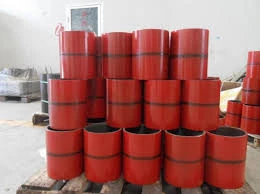- Afrikaans
- Albanian
- Amharic
- Arabic
- Armenian
- Azerbaijani
- Basque
- Belarusian
- Bengali
- Bosnian
- Bulgarian
- Catalan
- Cebuano
- Corsican
- Croatian
- Czech
- Danish
- Dutch
- English
- Esperanto
- Estonian
- Finnish
- French
- Frisian
- Galician
- Georgian
- German
- Greek
- Gujarati
- Haitian Creole
- hausa
- hawaiian
- Hebrew
- Hindi
- Miao
- Hungarian
- Icelandic
- igbo
- Indonesian
- irish
- Italian
- Japanese
- Javanese
- Kannada
- kazakh
- Khmer
- Rwandese
- Korean
- Kurdish
- Kyrgyz
- Lao
- Latin
- Latvian
- Lithuanian
- Luxembourgish
- Macedonian
- Malgashi
- Malay
- Malayalam
- Maltese
- Maori
- Marathi
- Mongolian
- Myanmar
- Nepali
- Norwegian
- Norwegian
- Occitan
- Pashto
- Persian
- Polish
- Portuguese
- Punjabi
- Romanian
- Russian
- Samoan
- Scottish Gaelic
- Serbian
- Sesotho
- Shona
- Sindhi
- Sinhala
- Slovak
- Slovenian
- Somali
- Spanish
- Sundanese
- Swahili
- Swedish
- Tagalog
- Tajik
- Tamil
- Tatar
- Telugu
- Thai
- Turkish
- Turkmen
- Ukrainian
- Urdu
- Uighur
- Uzbek
- Vietnamese
- Welsh
- Bantu
- Yiddish
- Yoruba
- Zulu
what is the difference between casing and tubing?
Casing and tubing are two essential components in oil and gas wells, serving distinct purposes that are critical to the drilling and production processes. Understanding the differences between casing and tubing is vital for professionals in the field, as well as for those interested in the petroleum industry. This article will delve into the definitions, functions, and key differences between casing and tubing.
Definitions
Casing refers to the large-diameter pipe that is installed in the well after drilling is completed. Its primary purpose is to stabilize the wellbore, prevent it from collapsing, and ensure that the surrounding groundwater is protected from contamination by oil or gas. Casing is usually made of steel or other strong materials and is available in various sizes. It is cemented into place to create a solid barrier against the formation surrounding the well.
On the other hand, tubing is a smaller-diameter pipe that is inserted into the well after the casing has been installed. Its main function is to transport the oil and gas from the reservoir to the surface. Tubing is typically more lightweight compared to casing and is designed to withstand the high pressures and temperatures that can occur downhole. It is also available in various sizes and material specifications, tailored to the specific needs of the well.
Functions of Casing
The primary function of casing is to provide structural integrity to the well and to isolate different pressure zones within the geological formations. Casing prevents the collapse of the wellbore and protects the environment by minimizing the risk of oil or gas leaks into the surrounding rock formations. Additionally, casing allows for the installation of various production equipment and helps facilitate the efficient extraction of resources.
The casing process involves several steps, including drilling the well, installing the casing, and cementing it in place. Once the casing is cemented, it is not typically removed. This creates a permanent structure designed to last for the life of the well.
Functions of Tubing
what is the difference between casing and tubing?

The tubing serves as the conduit through which oil and gas are brought to the surface. Once the reservoir pressure is sufficient, the hydrocarbons flow through the tubing and into the production facilities for processing. Tubing must be selected based on the anticipated pressure and temperature conditions of the well, as well as the characteristics of the fluid being produced.
Unlike casing, tubing can be removed and replaced if it becomes damaged or if the well requires maintenance. This feature allows operators to manage production operations effectively, ensuring that flow rates and pressures are optimal for extraction.
Key Differences
1. Diameter and Purpose The most obvious difference between casing and tubing is their diameter; casing is larger and provides structural support, while tubing is smaller and is used for transporting hydrocarbons.
2. Installation and Removal Casing is installed permanently and is cemented into place, whereas tubing can be removed for maintenance and replacement.
3. Material and Design Casing is designed to withstand the pressure of surrounding formations and prevent collapse, while tubing is specifically engineered to handle the flow of oil and gas under varying downhole conditions.
4. Environmental Protection Casing plays a crucial role in environmental protection by isolating different geological formations, while tubing focuses primarily on production efficiency.
In conclusion, casing and tubing are integral to the functioning of oil and gas wells, each fulfilling important tasks that contribute to the overall success of resource extraction. By understanding the differences between these two components, industry professionals can better navigate the complexities of well design and production operations.
-
Tubing Pup Joints: Essential Components for Oil and Gas OperationsNewsJul.10,2025
-
Pup Joints: Essential Components for Reliable Drilling OperationsNewsJul.10,2025
-
Pipe Couplings: Connecting Your World EfficientlyNewsJul.10,2025
-
Mastering Oilfield Operations with Quality Tubing and CasingNewsJul.10,2025
-
High-Quality Casing Couplings for Every NeedNewsJul.10,2025
-
Boost Your Drilling Efficiency with Premium Crossover Tools & Seating NipplesNewsJul.10,2025







